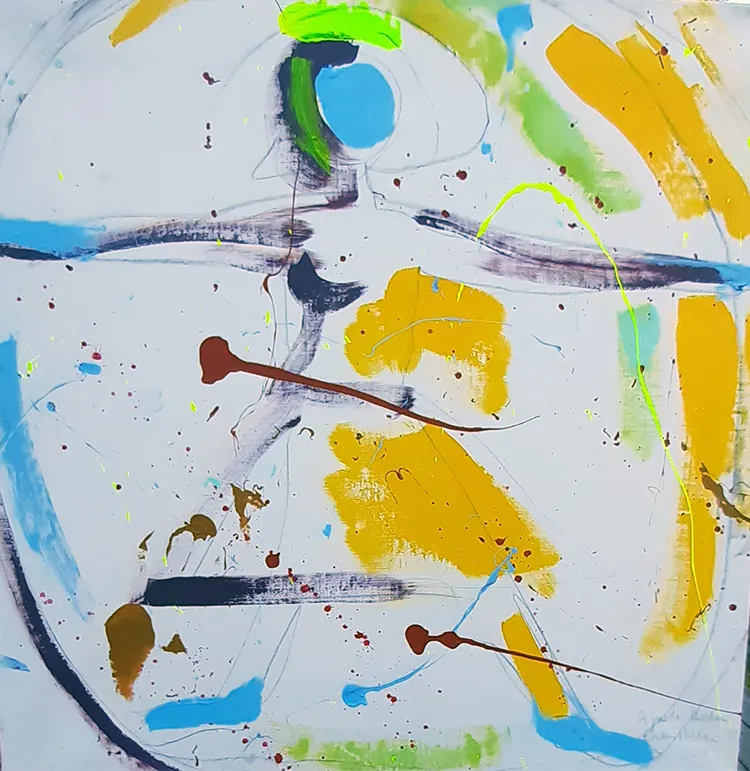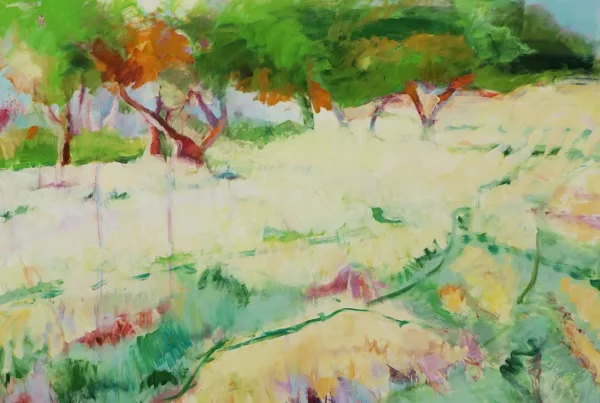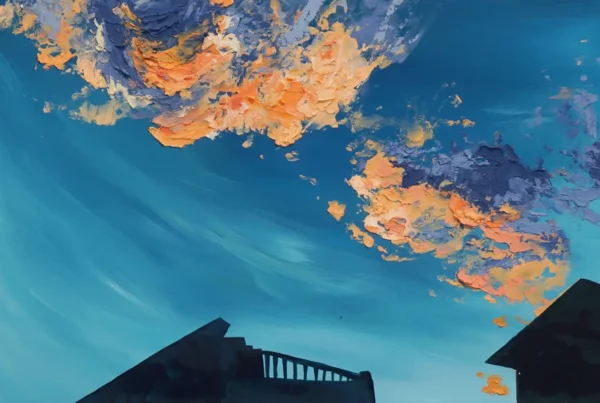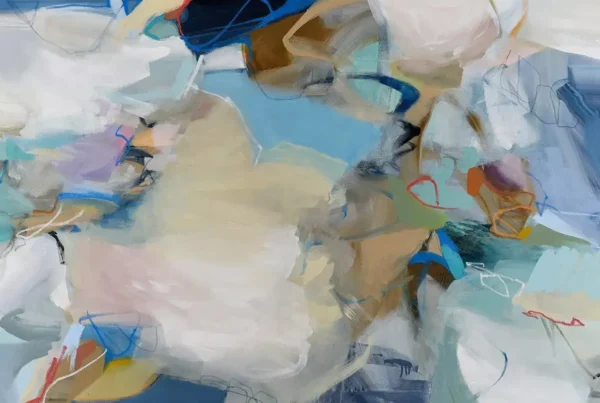“I was born with that gene of an artist for good and bad. It’s necessary as an honest artist and what you want to leave behind.”
A Journey Rooted in Northern Origins
Agneta Eriksson Hildén‘s artistic journey began in the tranquil landscapes of northern Sweden, where she still finds respite and inspiration. The serene beauty of her homeland, especially during her frequent holiday visits, provides a vital source of creativity, shaping her artistic worldview. Growing up, Agneta was more than an aspiring artist—she was an elite gymnast, often traveling extensively from a young age. By her 13th birthday, she had already celebrated in Beirut and frequently visited New York, immersing herself in diverse cultures that would leave a lasting impact on her. These early experiences played an essential role in shaping her perspective, imbuing her art with multicultural depth and insight.
Her initial venture into formal education took her to Stockholm, where she pursued architecture. This path, however, soon shifted as she found herself drawn to an art program, an invitation she embraced wholeheartedly. Yet, this period was not without its challenges. During her studies, she encountered significant mental health struggles, describing it as a time when her soul was “offered on the altar of art.” This vulnerability, though difficult, added layers of authenticity and emotional resonance to her work, profoundly influencing her artistic approach. Later in life, marriage and motherhood provided further depth to her creations, as personal milestones became interwoven into her art.
These diverse facets of Agneta’s background—ranging from her rigorous training in gymnastics to her architectural studies and personal challenges—have all profoundly influenced her artistic output. Her projects like LA Modulor delve into themes of the female body and its expression within architectural contexts, while ODD Realism presents a candid exploration of humanity’s varying realities. These works collectively explore themes of cultural diversity, personal acceptance, and the myriad ways humans relate to both physical and emotional spaces.
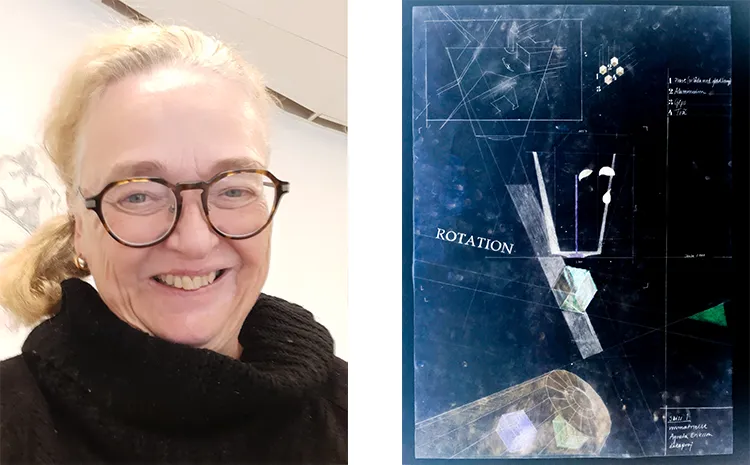
Agneta Eriksson Hildén: Born an Artist, Driven to Create
Agneta firmly believes that her identity as an artist was predestined; creativity has always been an intrinsic part of her. It wasn’t the pursuit of formal education or a conscious career choice that led her down this path—art was, and remains, a fundamental aspect of her existence. She describes her journey as a natural progression, an inevitable evolution, driven by an innate urge to create. The creative process has always been as inherent to her as breathing, something she had to embrace and express.
This passion found its ultimate form primarily in acrylic painting, although her interests span multiple media, including drawing. Central to her artistic style are two primary themes—LA Modulor, where she explores the portrayal of the female form in the context of architectural spaces, and ODD Realism, a thematic exploration that reflects on diverse human experiences and the universality of acceptance. These themes reveal her dedication to discussing human interaction with space, culture, and the varied experiences that constitute reality.
Agneta’s approach to her workspace is as unique as her artistic process. Unlike many artists who thrive in abundant natural light, she prefers a minimalist environment, free of distractions and stripped to its essentials. She lets the rhythm of Sweden’s four distinct seasons guide her focus—each change providing a renewal of energy and creative inspiration. For Agneta, the stark simplicity of her studio is where her most powerful artistic expressions emerge, allowing her to fully engage with the colors and forms on her canvas.

An Abstract Vocabulary of Vibrancy and Gesture
Agneta’s artistic influences span a dynamic spectrum, from iconic names in architecture and modern art to lesser-known, yet profoundly impactful figures. Le Corbusier’s architectural philosophies have deeply resonated with her, providing a structural counterpoint to her otherwise fluid artistic expressions. Alongside him, two Swedish artists—CF Hill and Erland Cullberg—both known for their struggles with mental health, have inspired her exploration of the raw and vulnerable aspects of creativity. Additionally, she draws inspiration from Vincent van Gogh’s emotional intensity and Jackson Pollock’s dynamic, action-based painting techniques. These influences converge in her art, which blends exuberant abstract expressionism with the spontaneity of gestural painting.
Her work is characterized by vivid, almost neon hues—vibrant reds, yellows, blues, and greens—that convey both playfulness and a sense of focused control and intuition. Agneta employs sweeping brushstrokes, splashes, and drips that evoke a sense of controlled improvisation, reminiscent of Pollock’s method but distinct in her deliberate use of contrasting colors. Her pieces often balance structured, architectural forms with more organic, free-flowing elements, reflecting both her background in architecture and her desire for spontaneous expression. This contrast speaks to the duality of human experience—the balance between control and freedom, order and play.
Certain pieces subtly suggest figurative forms, vaguely outlining human-like silhouettes amidst bold colors, inviting viewers to interpret them personally. This deliberate ambiguity allows each observer to connect with the work in their own way, adding layers of interpretation. Agneta’s art often transcends the canvas, creating a sense of depth, movement, and rhythm that seems to push beyond physical limits. Her approach embodies a celebration of the act of creation itself—a raw, instinctive process that is as much about capturing energy as it is about producing an image.

Agneta Eriksson Hildén: Meaningful Pieces and Future Aspirations
Among her diverse body of work, one piece holds particular significance for Agneta. This acrylic painting is an exploration of female proportions through the lens of architectural design—a medium historically dominated by the male perspective. This work represents Agneta’s own reflections on her body and mind, striving to connect art with architecture on a fundamental, almost archetypal level. This connection, rooted in her own observations and lived experiences, underpins much of her creative process and stands as a powerful commentary on reclaiming space and representation for women.
Another work of great importance to her is ODD Realism, a painting inspired by her summerhouse in northern Sweden. In this piece, she uses contrasting colors, naive drawings, and expressive figures to delve into themes of suffering and humanity’s shared experiences. The work conveys an intense honesty about what it means to be human—highlighting both joy and struggle. For Agneta, art must speak to the commonalities of human experience, and ODD Realism achieves this through its raw depiction of emotion and environment. Recognized internationally, this painting has been celebrated for its pioneering approach to portraying humanity.
Agneta’s ambitions extend beyond individual works; she is already well-established with exhibitions in galleries and museums across many countries, and she envisions a future where her artistic explorations reach even broader audiences through more international exhibitions, galleries, and media outlets. She hopes her study of art—particularly the interplay between architectural form and the human body—will inspire and challenge contemporary audiences. To her, art is not merely a visual experience but a mission—an opportunity to make sense of the world, communicate essential truths, and leave behind a meaningful legacy. This dream represents not just her commitment to her craft, but also her desire to contribute to the wider artistic discourse in a way that resonates far beyond her studio.
